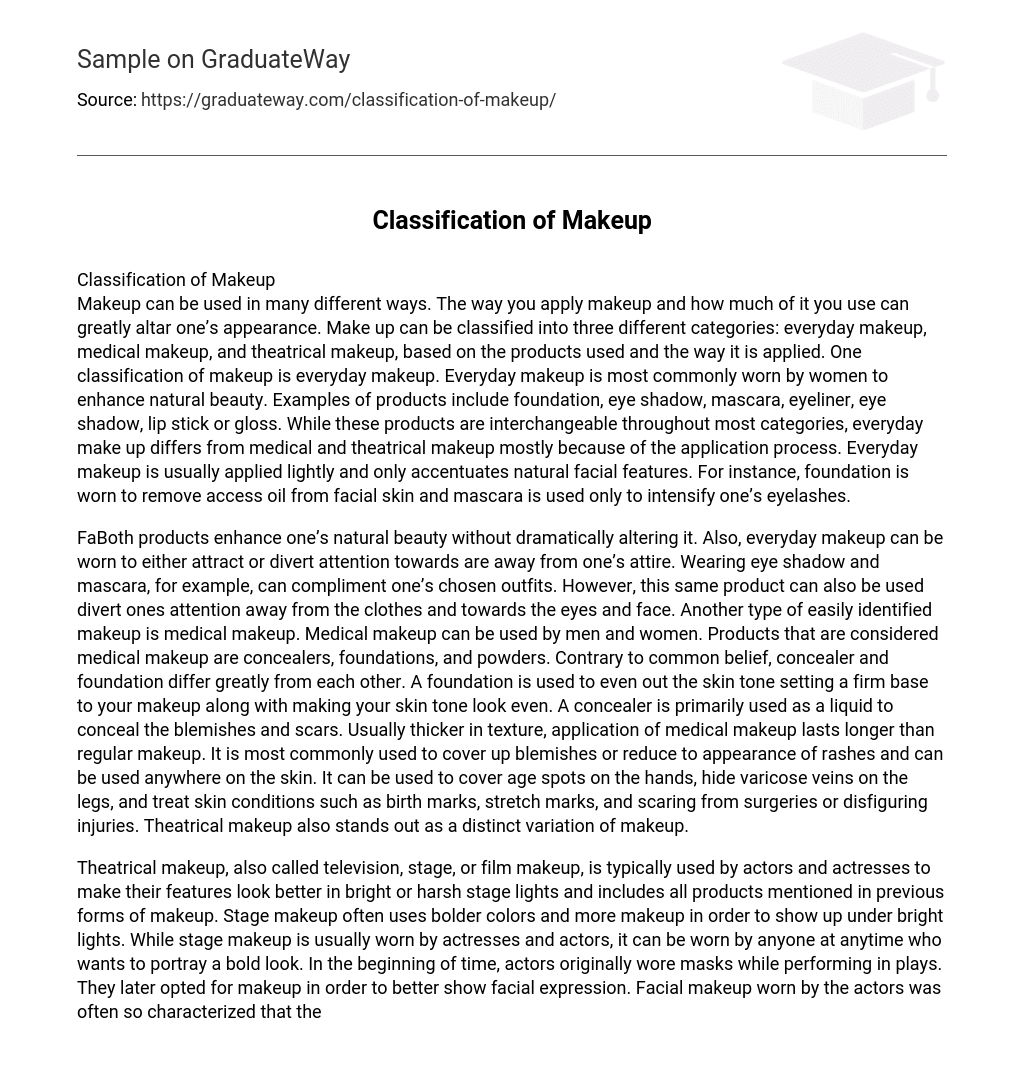Makeup can be used in many different ways. The way you apply makeup and how much of it you use can greatly alter one’s appearance. Make up can be classified into three different categories: everyday makeup, medical makeup, and theatrical makeup, based on the products used and the way it is applied. One classification of makeup is everyday makeup. Everyday makeup is most commonly worn by women to enhance natural beauty. Examples of products include foundation, eye shadow, mascara, eyeliner, eye shadow, lipstick or gloss. While these products are interchangeable throughout most categories, everyday make up differs from medical and theatrical makeup mostly because of the application process. Everyday makeup is usually applied lightly and only accentuates natural facial features. For instance, the foundation is worn to remove excess oil from facial skin and mascara is used only to intensify one’s eyelashes.
FaBoth products enhance one’s natural beauty without dramatically altering it. Also, everyday makeup can be worn to either attract or divert attention towards being away from one’s attire. Wearing an eye shadow and mascara, for example, can compliment one’s chosen outfits. However, this same product can also be used to divert one’s attention away from the clothes and towards the eyes and face. Another type of easily identified makeup is medical makeup. Medical makeup can be used by men and women. Products that are considered medical makeup are concealers, foundations, and powders. Contrary to common belief, concealer and foundation differ greatly from each other. A foundation is used to even out the skin tone setting a firm base for your makeup along with making your skin tone look even.
A concealer is primarily used as a liquid to conceal the blemishes and scars. Usually thicker in texture, application of medical makeup lasts longer than regular makeup. It is most commonly used to cover up blemishes or reduce the appearance of rashes and can be used anywhere on the skin. It can be used to cover age spots on the hands, hide varicose veins on the legs, and treat skin conditions such as birthmarks, stretch marks, and scaring from surgeries or disfiguring injuries. Theatrical makeup also stands out as a distinct variety of makeup.
Theatrical makeup, also called television, stage, or film makeup, is typically used by actors and actresses to make their features look better in bright or harsh stage lights and includes all products mentioned in previous forms of makeup. Stage makeup often uses bolder colors and more makeup in order to show up under the bright lights. While stage makeup is usually worn by actresses and actors, it can be worn by anyone at anytime who wants to portray a bold look. In the beginning of time, actors originally wore masks while performing in plays. They later opted for makeup in order to better show facial expression. Facial makeup worn by the actors has been often so characterized that the audience was almost instantly able to tell everything they needed to know about a character.
Stage makeup of the Shakespeare era was made with whatever could be found. Lead paint was popular, the facial features were accented by chalk or soot, and corks were burned and used to apply full dark lines on the face to highlight facial features. Today’s stage makeup used is safe and can be used for either a natural look or a detailed creative look depending upon the play. Makeup is a category that includes very similar products. However, this category can easily be broken down into many subcategories. These comparable products perform differently and in response portray different styles or looks. These different styles assist to classify makeup in various ways.





